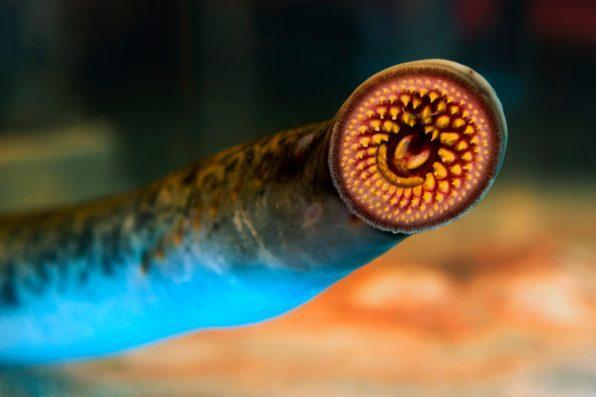Paleontologists In China Recently Uncovered The Fossilized Remains Of Two New Lamprey Species Within Rocks That Are 160-Million-Years-Old

The fossilized remains of two new lamprey species have recently been discovered in 160-million-year-old rocks by paleontologists in China. The discovery has helped to shed some light on the evolution of lampreys.
The pair was found in the Yanliao Biota, a collection of fossils in northern China. One of the lampreys measured about 23 inches long, making it the largest known fossilized lamprey. It was named Yanliaomyzon occisor. In Latin, “occisor” means “killer.”
The smaller species was 11 inches long and given the name of Yanliaomyzon ingensdentes, which is derived from the Latin words for “large teeth.”
Lampreys are fish that closely resemble eels. The parasitic lampreys of today have funnel-shaped, jawless mouths filled with razor-sharp teeth that they use to latch onto prey and suck out their victim’s blood. They also go through metamorphosis, consisting of three different stages.
The fossils were so well-preserved that paleontologists were able to examine the creatures’ oral structures. After studying the arrangement of the teeth and mouths of the newly discovered prehistoric lampreys, scientists have come to the conclusion that, unlike their modern counterparts, the ancient lampreys weren’t bloodsuckers.
Instead, they would chomp down on their prey, taking out large chunks of flesh. One of the fossils had fragments of bone in its stomach, showing that the lamprey was strong enough to bite through skeletons.
Lampreys have been around for 360 million years, but they do not typically fossilize well, resulting in a lot of uncertainty regarding their evolutionary record and feeding styles. The most recent finds are the most well-preserved lamprey fossils from the dinosaur age ever.
The newfound species, which existed at the same time as the dinosaurs during the Jurassic period, serves as a connection between the earliest lampreys and the lampreys of today.
The earliest lampreys weren’t as fierce or powerful. They were only about an inch long and did not have the necessary features that would allow them to suck blood or eat flesh. They also did not go through metamorphosis.

GDM photo and video – stock.adobe.com – illustrative purposes only, not the actual lamprey
By the Jurassic period, lampreys had become flesh-eating predators with larger body sizes and more complex feeding capabilities.
If true crime defines your free time, this is for you: join Chip Chick’s True Crime Tribe
It Turns Out That Her Boyfriend Is Married, And She Also Suspects He Has A Son
Sign up for Chip Chick’s newsletter and get stories like this delivered to your inbox.
More About:News





